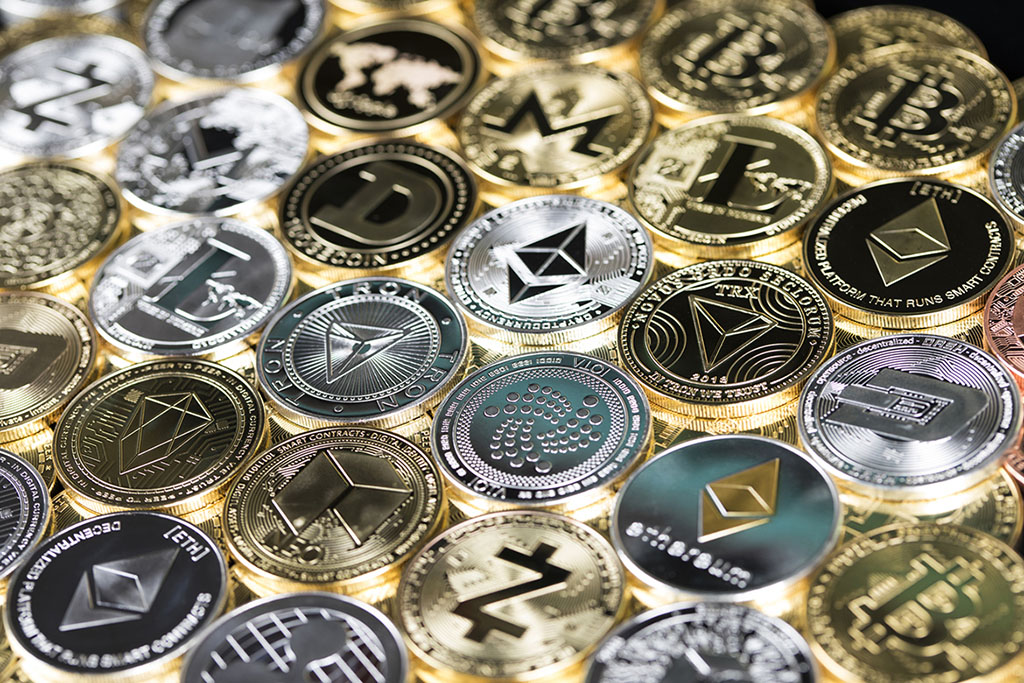ARTICLE AD
Both the foreign exchange (forex) market and the cryptocurrency market offer exciting opportunities for traders to profit from price movements. However, they also come with significant differences in how they operate. Understanding these key distinctions is essential for determining which market is better suited to your trading style and objectives.
This article provides an in-depth comparison of forex and cryptocurrency trading across major factors like volatility, trading hours, regulation, and more. It also highlights important similarities in aspects of BTC trading at Forex brokers, such as technical analysis applicability. By the end, you will have a solid grasp of each market’s unique attributes to inform your trading decisions.
Trading Volume and Market Size
Trading volume and market size differ enormously between the forex and crypto markets.
The forex market is by far the world’s largest and most liquid financial market. Over $7.5 trillion is traded daily on average, dwarfing even major stock markets like the NYSE. This immense volume comes from the decentralization of forex, allowing it to stay open 24 hours a day.
In contrast, the cryptocurrency market trades about $295 billion daily. Although this pales in comparison to forex, it’s still sizable enough to provide decent liquidity for most major cryptocurrencies. Additionally, the crypto market remains relatively new but has experienced massive growth in recent years.
Volatility and Price Swings
Volatility refers to how dramatically an asset’s price moves over time. This measure of price fluctuation is an important consideration for traders since higher volatility presents more opportunities to profit from changing values.
Cryptocurrencies are vastly more volatile than currency pairs traded on the forex. For example, Bitcoin has had daily price swings of over 10% on multiple occasions. Meanwhile, even major pairs like EUR/USD rarely experience daily changes exceeding 1%.
This difference in volatility emerges because cryptocurrencies are speculative assets with prices determined purely by market sentiment. On the other hand, forex pairs have prices grounded in macroeconomic factors like interest rates and GDP growth. Their values, therefore, move in a relatively stable manner.
For traders, massive crypto price swings enable huge profits but also heighten risk. More conservative traders favor forex due to lower volatility across major currency pairs.
Trading Hours
The forex market’s immense trading volume stems from its 24 hour a day, 5 days a week schedule. This enables currency values to continue reacting to developments around the world in real-time.
In particular, the market transitions between major forex trading sessions as business hours open in financial centers worldwide. For example, the Asian session opens first, then European, followed by North American to complete a 24 hour cycle.
Meanwhile, the cryptocurrency market remains open 24/7 in theory, but liquidity drops significantly on weekends and overnight during the week. Thus, most trading occurs when major crypto exchanges like Coinbase and Binance are fully operational.
Overall, forex provides seamless trading around the clock, while crypto sees variability in liquidity depending on the time of day and week.
Regulation
The regulation also differs drastically between the two markets. Forex brokers must comply with strict oversight in most jurisdictions worldwide. For example, in the United States, the Commodities Futures Trading Commission (CFTC) implements rules like maximum leverage caps.
In contrast, cryptocurrency exchanges have limited regulation globally so far. Much of the crypto space operates in legal gray zones, although regulation is actively being drafted. But for now, traders must conduct due diligence in picking reputable exchanges that implement sound security practices.
The additional regulation provides forex traders strong investor protections against issues like fraud. However, some crypto enthusiasts argue the blockchain’s transparent and immutable ledger reduces need for intense oversight specifically.
Technical Analysis Applicability
Technical analysis studies price charts to forecast future movements based on historical patterns. Methods like identifying support and resistance levels carry validity in any market with fluctuating values.
Therefore, technical analysis serves as a crucial tool for traders in both the forex and cryptocurrency realms. Chart patterns apply universally since they capitalize on psychological herd mentalities around fear, uncertainty, and greed.
However, technical analysis better predicts forex price action over longer time horizons due to lower volatility. Meanwhile, massive speculative swings make crypto technical analysis most effective for short-term time frames.
Trading Instruments
The types of instruments traded also differ between forex and crypto:
• Forex - Trades currency pairs (e.g., EUR/USD) depending on relative value fluctuations between the two currencies.
• Cryptocurrency - Trades coins/tokens (e.g., Bitcoin) directly based on supply and demand for the asset.
Cryptocurrencies act as standalone assets unpegged to sovereign currencies in their valuation. However, forex trading always measures the value of one currency relative to another.
Factors Impacting Values
We touched on this briefly already, but the contrasting factors driving forex and crypto prices merit a deeper explanation:
Forex - Macroeconomic factors like monetary policy, economic growth, geopolitics
Cryptocurrency - Speculation, investor sentiment, supply dynamics, adoption rates
Forex reflects the overall health and stability of the underlying economies. For example, the EUR/USD may fluctuate based on whether the EU or US central banks change benchmark interest rates.
Meanwhile, cryptocurrencies remain purely speculative as adoption slowly grows for blockchain payment solutions and smart contract platforms. Investor psychology combined with major protocol changes causes most price movements.
The different valuation drivers produce the massive volatility divergence between crypto and forex, as highlighted earlier.
Trading Costs
Trading costs also make a major difference when comparing forex vs crypto:
Forex
• Low spreads/commissions
• No transfer fees between brokers & banks
Crypto
• Much higher spreads
• Network fees for moving assets
Forex brokers offer direct market access with tight spreads since they directly provide liquidity from banks. However, crypto exchanges must factor in coverage of blockchain network costs and profit margins.
This gives forex traders an inherent cost advantage, especially for higher volume trading strategies.
Trading Approaches
The most common trading approaches include:
• Technical analysis - Analyzing chart patterns as described already
• Fundamental analysis - Evaluating events impacting underlying asset valuation
• Algorithmic trading - Using computer algorithms to execute trades automatically
These broad approaches apply reasonably well to both markets.
For example, algorithmic trading works for any electronic exchange with an API interface. Fundamental analysis seems to be more impactful for forex because macroeconomics is very important. Long-term crypto traders also watch for fundamentals, such as technology upgrades, to see if they indicate changed utility.
On the whole, the main difference is in technical analysis, which has an advantage over longer horizons in forex but not in short-term crypto trading.
Key Trading Metrics
Let's explore some of the key metrics traders use to evaluate performance across each market:
Risk Reward Ratio - A calculation of the relative size of potential gains vs potential losses of a trade. Ideally, a higher risk-reward ratio. In crypto trades, reward potential is higher.
Win Trade - Percentage of winning trades out of total trades. Aim for >50%. Newer crypto traders tend to have lower win rates.
Risk Management - essential for markets and encompasses principles such as stop losses and position sizing. In established forex broker platforms, it is more advanced.
Sharpe Ratio - Measures returns taking risk into account. It varies based on trading style.
These core metrics are what gives traders a benchmark to compare themselves against the market. Because of the amplified volatility, cryptocurrency traders should pay closer attention to risk management.
Market Manipulation Concerns
More often in crypto than forex, there are concerns about widespread market manipulation. Critics point to practices like:
• Buying and selling an asset to create fake volume is known as wash trading.
• Artificially inflating prices by coordinated buying, called pumps and dumps.
• Placing fake orders to influence market sentiment is known as spoofing.
The highly speculative crypto landscape, and the fact it is unregulated, make it ripe for manipulation. Transparency initiatives by top exchanges help combat this, but there are still a lot of questionable players.
Meanwhile, forex is still tightly regulated with oversight against fraud. Of course, manipulation does occur, but primarily through central bank currency interventions (rather than private market manipulation).
Emerging Financial Products
Both markets now offer a variety of financial products for traders to broaden their opportunities:
Forex
• Currency futures
• Options contracts
• Forex indices
Crypto
• Crypto futures
• Options
• Index funds
• Staking/lending
These products serve as alternative profit vehicles from movement in markets or a source of passive income. The crypto space is constantly innovating new offerings as more and more people adopt.
Key Takeaways
In summary, analyzing the key differences between forex and crypto trading across these factors offers several main takeaways:
• More speculative traders are drawn to crypto because it offers them extreme volatility and higher reward potential.
• Conservative traders focusing on risk management find forex stable.
• Technical analysis works well with both markets, but time horizons are different.
• Crypto is dominated by shorter-term swing trading, while forex is better suited to long-term trends.
• There are heightened concerns about manipulation in the largely unregulated world of cryptocurrencies.
• Once these core contrasts are made clear, traders can now make better choices as to which market will work best with their own personal preferences and style.
While the markets are different, with slightly different adoption rates, both will likely continue growing over the next few decades and present enormous potential for savvy traders. Like any financial market, the path to forex and cryptocurrency success still begins with dedicating time to understand the unique attributes of each.
Disclaimer: This article is provided for informational purposes only. It is not offered or intended to be used as legal, tax, investment, financial, or other advice.

 1 month ago
20
1 month ago
20 

